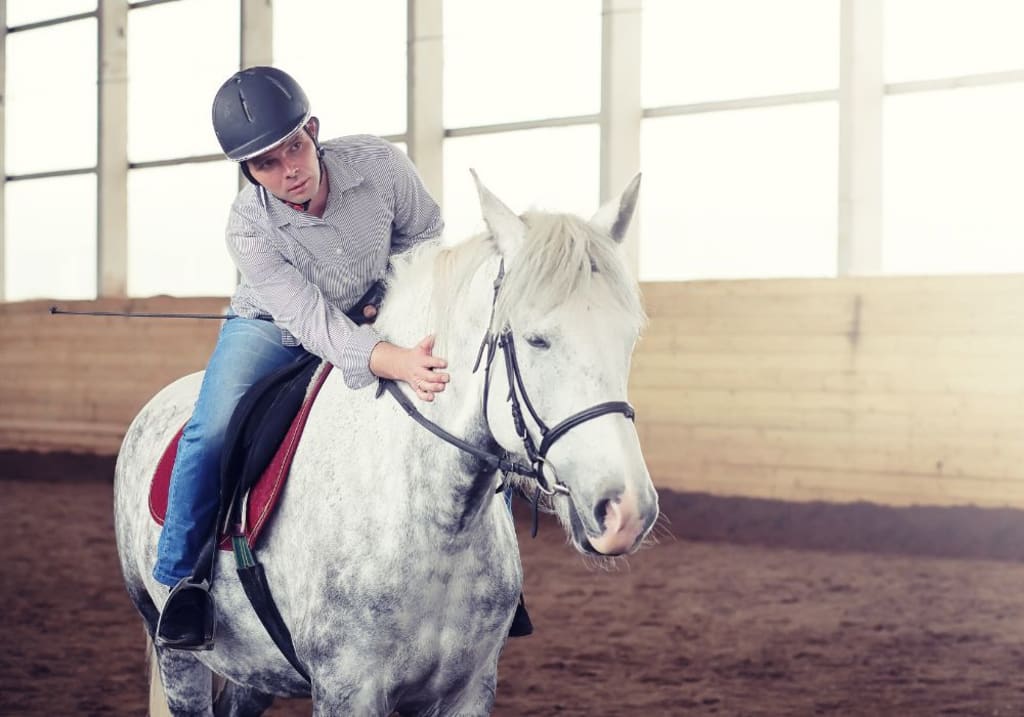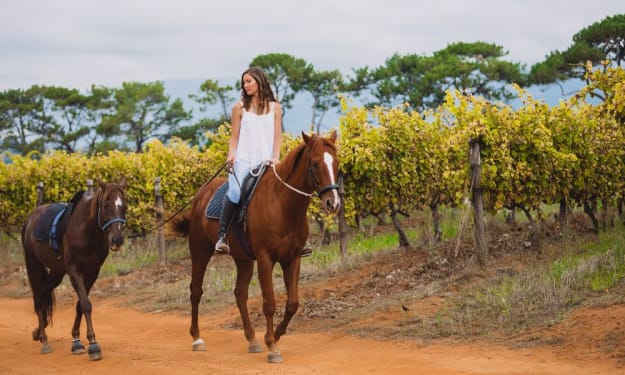Mastering the Art of Young Horse Training
Top Tips for a Successful Journey

Unlock the Potential of Your Young Equine Partner with These Proven Techniques and Strategies
Introduction:
Training a young horse can be both an exhilarating and challenging endeavor, requiring patience, skill, and a deep understanding of equine behavior and learning principles. As a new horse owner or trainer, embarking on this journey can feel daunting, but with the right approach and the right tips, you can unlock the incredible potential of your young equine partner.
In this comprehensive guide, we’ll explore the top tips for training a young horse, equipping you with the knowledge and tools necessary to create a positive, productive, and rewarding training experience. From establishing a solid foundation to addressing common challenges, we’ll cover the key strategies and techniques that will help you develop a strong, trusting bond with your horse while fostering its growth and progress.
Understanding the Importance of Young Horse Training
Training a young horse is a critical aspect of its development and well-being. Proper training not only helps the horse acquire essential skills and behaviors but also plays a pivotal role in its overall mental and physical health. Here’s why young horse training is so important:
- Laying a Solid Foundation: The early stages of training are crucial for establishing a strong foundation of obedience, responsiveness, and trust, which will serve as the bedrock for the horse’s future training and development.
- Promoting Safety and Handling: Effective training teaches young horses to be calm, cooperative, and responsive to human interaction, reducing the risk of accidents and injuries for both the horse and the handler.
- Developing Desirable Behaviors: Training helps mold the horse’s behavior, instilling positive habits and addressing any undesirable traits or tendencies early on.
- Enhancing Trainability: Horses that receive quality training from a young age tend to be more receptive to further training and more adaptable to new situations and challenges.
- Ensuring Welfare and Well-Being: Proper training contributes to the horse’s overall mental and physical well-being, reducing stress and promoting a positive, confident outlook.
- Preparing for Future Endeavors: Whether the horse is destined for competition, recreational riding, or other equestrian pursuits, a solid foundation of training will set it up for success.
Top Tips for Training a Young Horse
As you embark on the journey of training your young horse, consider the following top tips to help ensure a positive and productive experience:
Start Early and Consistent
- Begin training as early as possible, typically around the time the horse is weaned or yearling.
- Establish a consistent training regimen, with regular, short sessions to help the horse learn and retain new skills.
- Maintain a patient, positive, and rewarding approach, as young horses have shorter attention spans and require repetition and reinforcement.
Establish Trust and Respect
- Spend time building a strong, trusting relationship with your young horse through groundwork, bonding exercises, and positive reinforcement.
- Earn the horse’s respect through consistent and fair leadership, without resorting to fear or intimidation.
- Be a calm, confident, and reassuring presence, as young horses are highly sensitive to their handler’s emotional state.
Introduce Desensitization and Socialization
- Gradually expose your young horse to a variety of sights, sounds, and experiences to help it become more confident and adaptable.
- Desensitize the horse to common objects, situations, and handling procedures to reduce the risk of fear or reactivity.
- Provide opportunities for socialization, allowing the horse to interact with other horses and people in a controlled, positive environment.
Focus on Foundational Training
- Begin with the basics, such as halter training, leading, and groundwork, to establish a solid foundation of obedience and responsiveness.
- Introduce simple commands and cues, reinforcing them through repetition and positive reinforcement.
- Progress gradually, moving from simple to more complex tasks as the horse demonstrates understanding and confidence.
Tailor Training to the Individual
- Recognize that each young horse is unique, with its own personality, learning style, and training needs.
- Adapt your approach and training methods to best suit the individual horse, rather than applying a one-size-fits-all approach.
- Be observant and responsive to the horse’s reactions, adjusting the pace, intensity, and techniques as needed.
Incorporate Variety and Enrichment
- Mix up your training sessions, incorporating different exercises, environments, and challenges to keep the horse engaged and motivated.
- Provide opportunities for play, exploration, and mental stimulation to prevent boredom and maintain the horse’s enthusiasm.
- Alternate between training, grooming, and other positive interactions to create a well-rounded experience.
Address Behavioral Challenges Proactively
- Be vigilant in identifying and addressing any undesirable behaviors, such as nipping, kicking, or spooking, before they become ingrained habits.
- Consult with experienced trainers or equine behaviorists to develop effective, humane strategies for addressing behavioral issues.
- Remain patient and consistent in your approach, as resolving behavioral challenges takes time and dedication.
Provide Positive Reinforcement
- Use a combination of praise, treats, and other rewards to reinforce desired behaviors and encourage the horse’s learning.
- Avoid harsh punishments or negative reinforcement, as these can undermine the trust and confidence you’ve built.
- Celebrate small successes and progress, as this will help keep the young horse motivated and engaged.
Maintain a Safe and Appropriate Training Environment
- Ensure that your training area is secure, free of hazards, and appropriate for the horse’s size and stage of training.
- Use well-fitting, safe equipment, such as halters, lead ropes, and training aids, to support the horse’s comfort and safety.
- Consider the horse’s physical and mental state, adjusting the intensity and duration of training sessions as needed.
Collaborate with Equine Professionals
- Seek guidance and support from experienced trainers, veterinarians, and equine behaviorists to ensure you’re following best practices and addressing any issues that may arise.
- Be open to learning and implementing their recommendations, as their expertise can be invaluable in guiding your young horse’s training journey.
- Participate in clinics, workshops, or other educational opportunities to continue developing your own skills and knowledge as a trainer.
- Navigating Common Challenges in Young Horse Training
- Even with the best intentions and preparation, training a young horse can present various challenges along the way. Here are some common issues you may face and strategies for addressing them:
Resistance or Stubbornness:
- Remain patient and consistent, gradually increasing the difficulty of tasks to build the horse’s confidence and cooperation.
- Incorporate positive reinforcement and avoid punishing the horse, as this can exacerbate the problem.
Fearfulness or Shyness:
- Proceed slowly and cautiously, using desensitization techniques to help the horse overcome its fears.
- Provide a calm, reassuring presence and avoid forcing the horse into situations it’s not ready for.
Lack of Attention or Focus:
- Keep training sessions short and engaging, incorporating variety and frequent breaks to maintain the horse’s interest.
- Ensure the horse is getting adequate turnout, exercise, and mental stimulation to support its overall well-being.
Aggression or Nipping:
- Address the issue proactively, using positive reinforcement and consistent correction to discourage the undesirable behavior.
- Consult with a professional trainer or equine behaviorist to develop an effective management plan.
Difficulty with Transitions or New Environments:
- Gradually expose the horse to new situations, people, and environments, using desensitization and positive reinforcement.
- Be patient, understanding, and adaptable as the horse navigates these new experiences.
- Remember, every horse is unique, and the challenges you face may vary. By staying attuned to your horse’s individual needs, maintaining a positive and proactive approach, and seeking guidance when necessary, you can overcome these obstacles and foster a successful training journey.
Conclusion
Training a young horse is a rewarding and enriching experience that requires patience, dedication, and a deep understanding of equine behavior and learning principles. By following the top tips outlined in this comprehensive guide, you’ll be well on your way to unlocking the incredible potential of your young equine partner.
From establishing a solid foundation of trust and respect to addressing common challenges with a positive and proactive approach, the strategies and techniques presented in this article will empower you to create a training journey that is both productive and fulfilling for both you and your horse.
Remember, the training process is an ongoing journey, and each young horse will progress at its own pace. By remaining adaptable, observant, and open to guidance from experienced equine professionals, you’ll be able to navigate the ups and downs of young horse training with confidence and, ultimately, forge a strong, lasting bond with your equine companion.
Embrace the exciting journey ahead, and celebrate the small victories along the way. With the right mindset, the right tools, and the right approach, you’ll be well on your way to developing a confident, responsive, and well-trained young horse.
About the Creator
Hasan
Welcome...
In this site of mine you can learn amazing things and many information that you don't know so please subscribe to my site.
Enjoyed the story? Support the Creator.
Subscribe for free to receive all their stories in your feed. You could also pledge your support or give them a one-off tip, letting them know you appreciate their work.






Comments
There are no comments for this story
Be the first to respond and start the conversation.